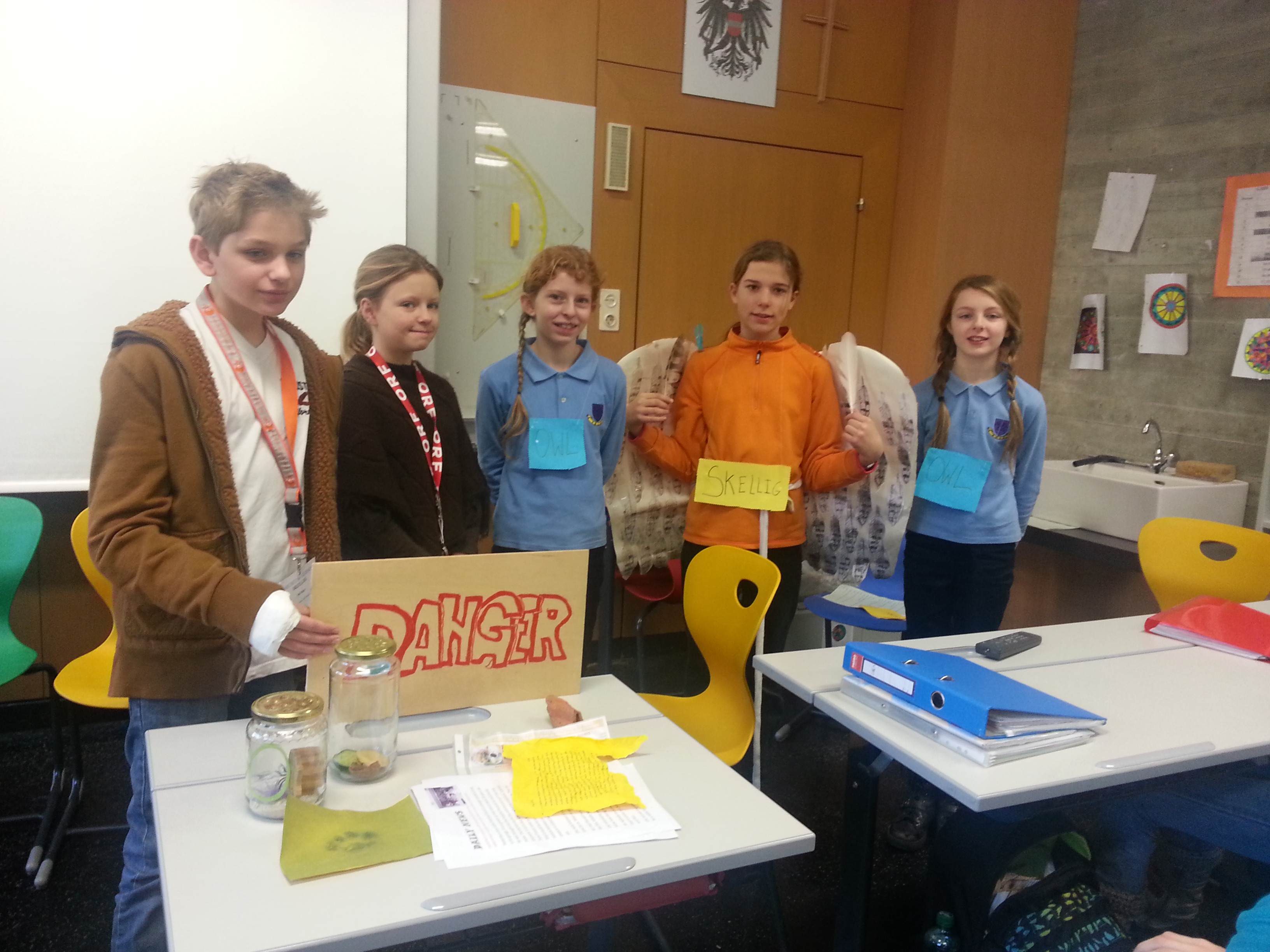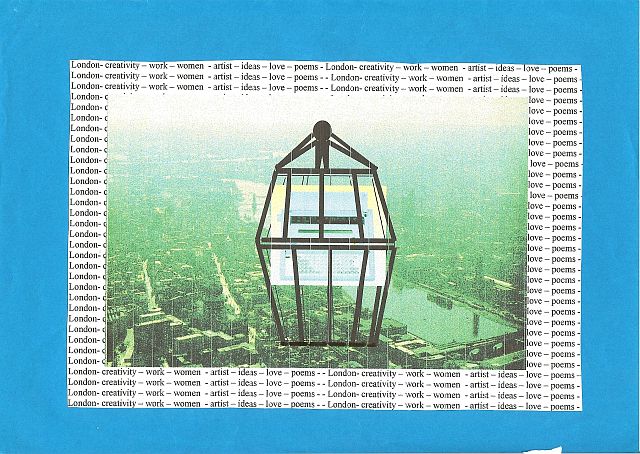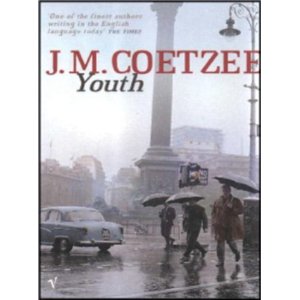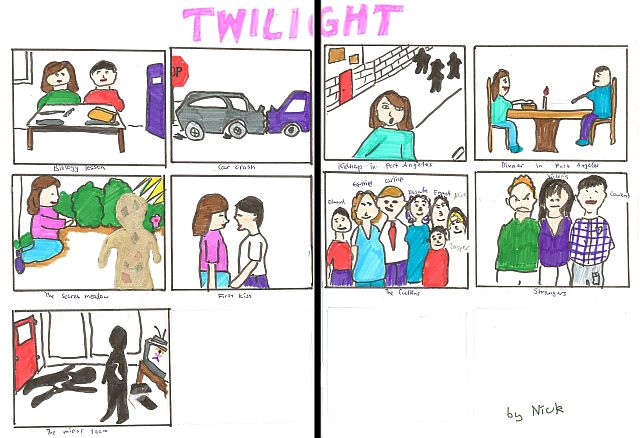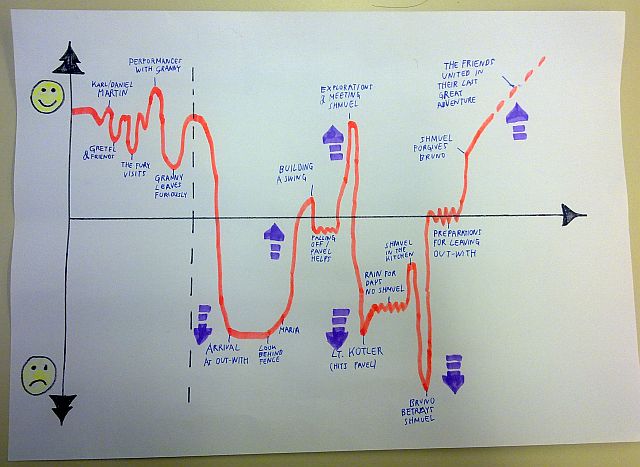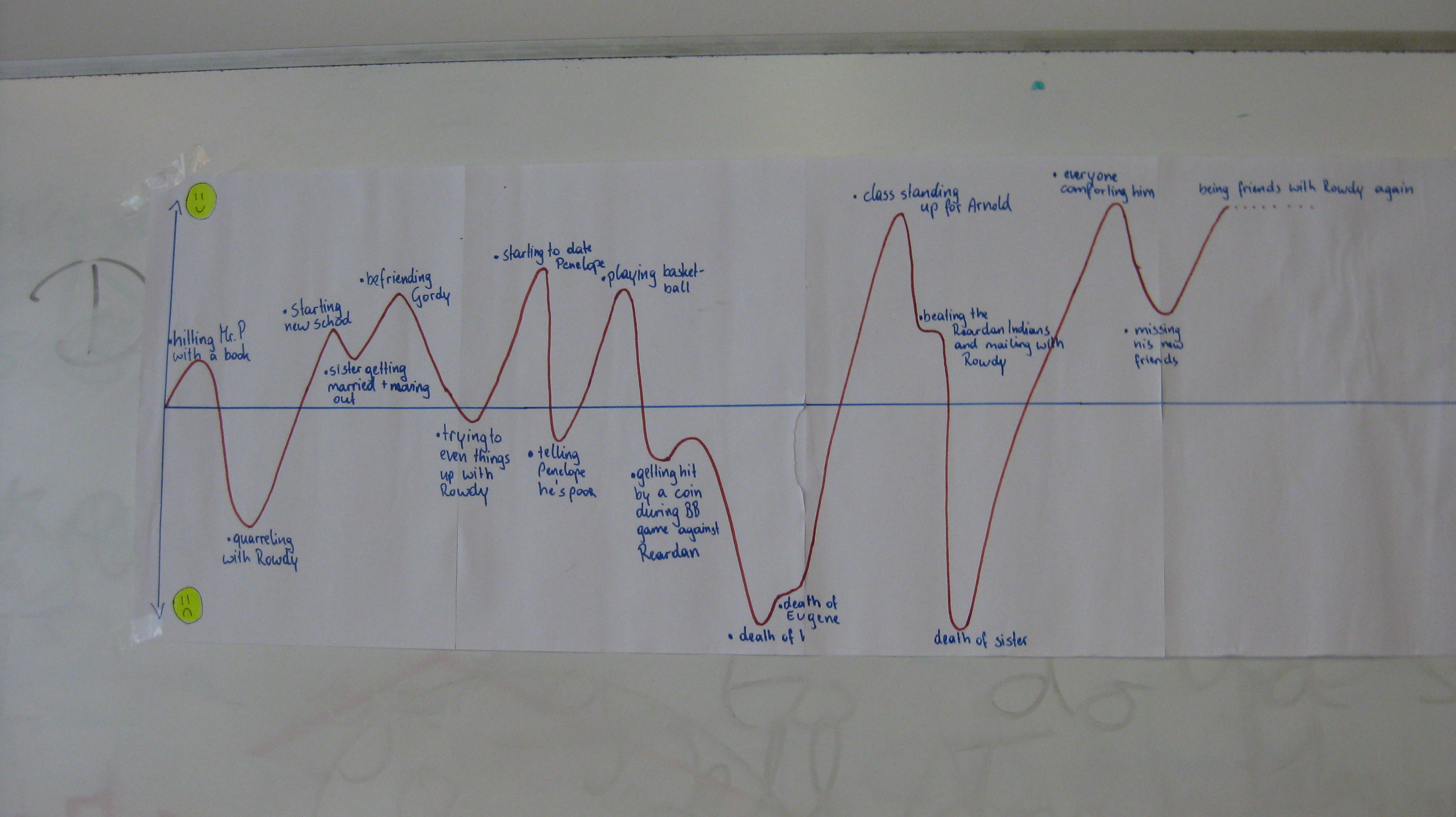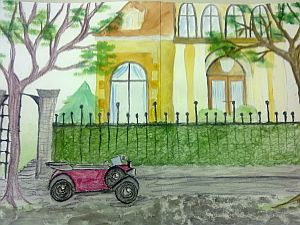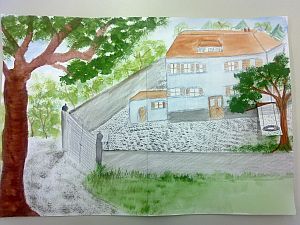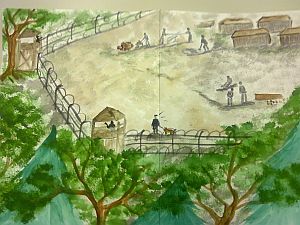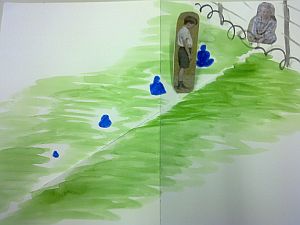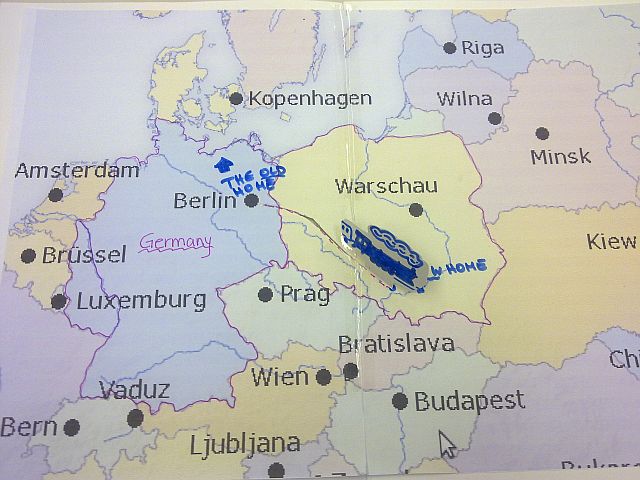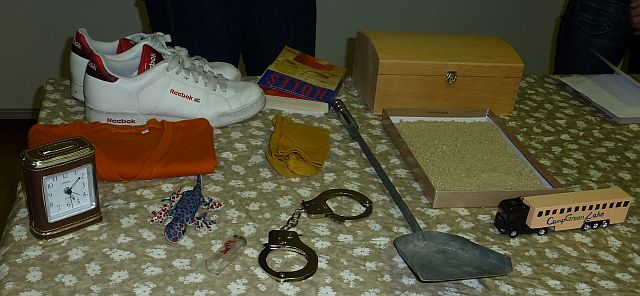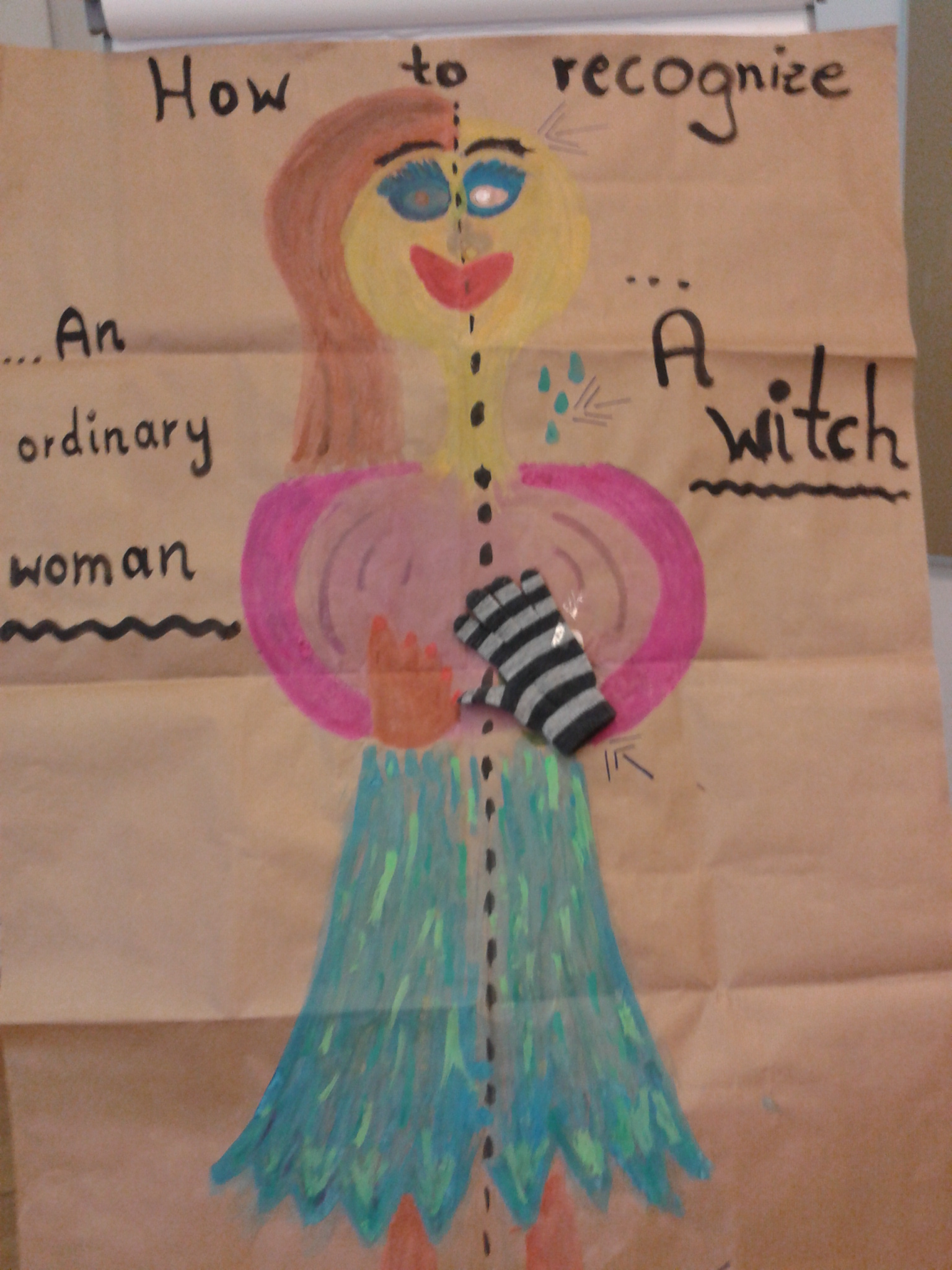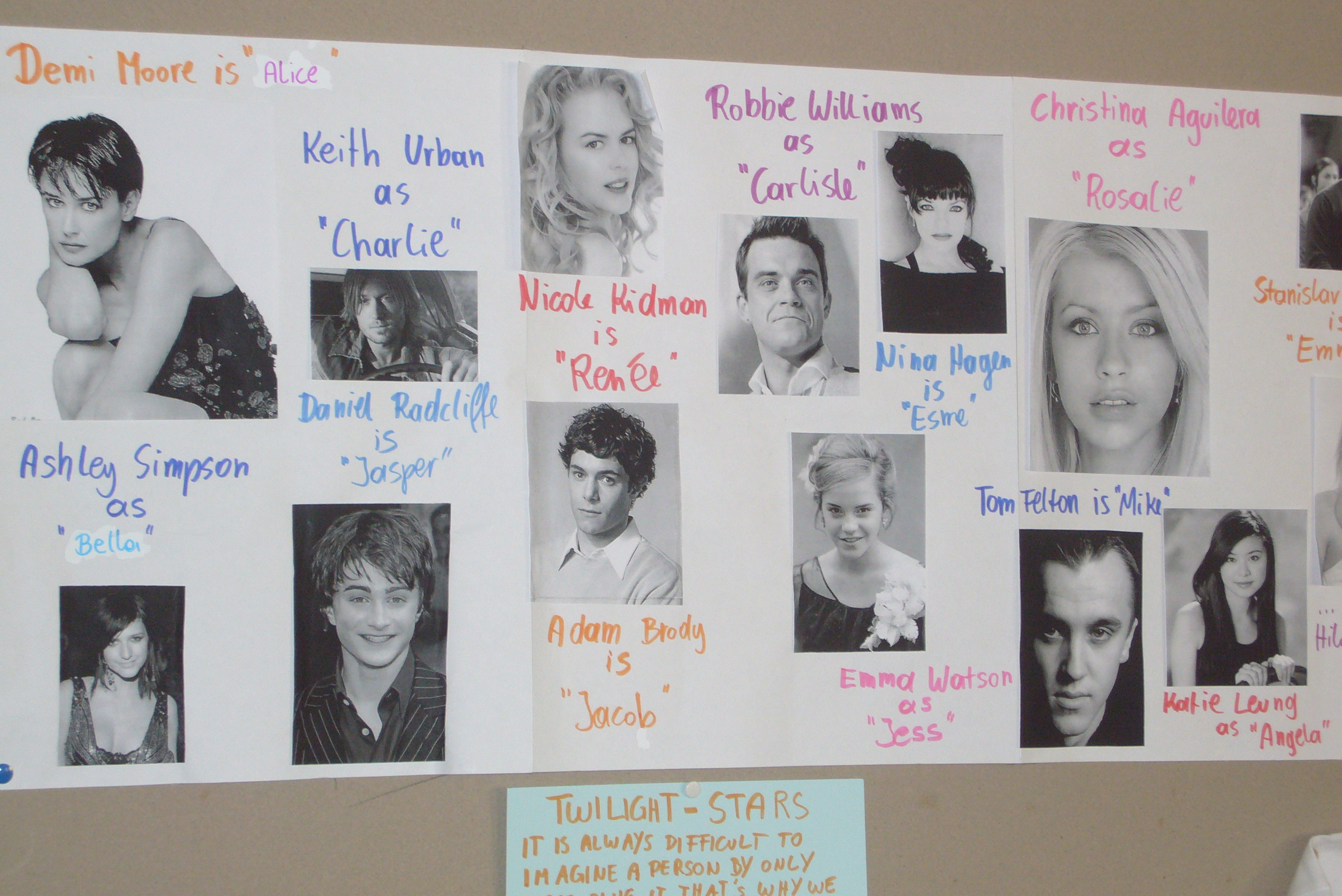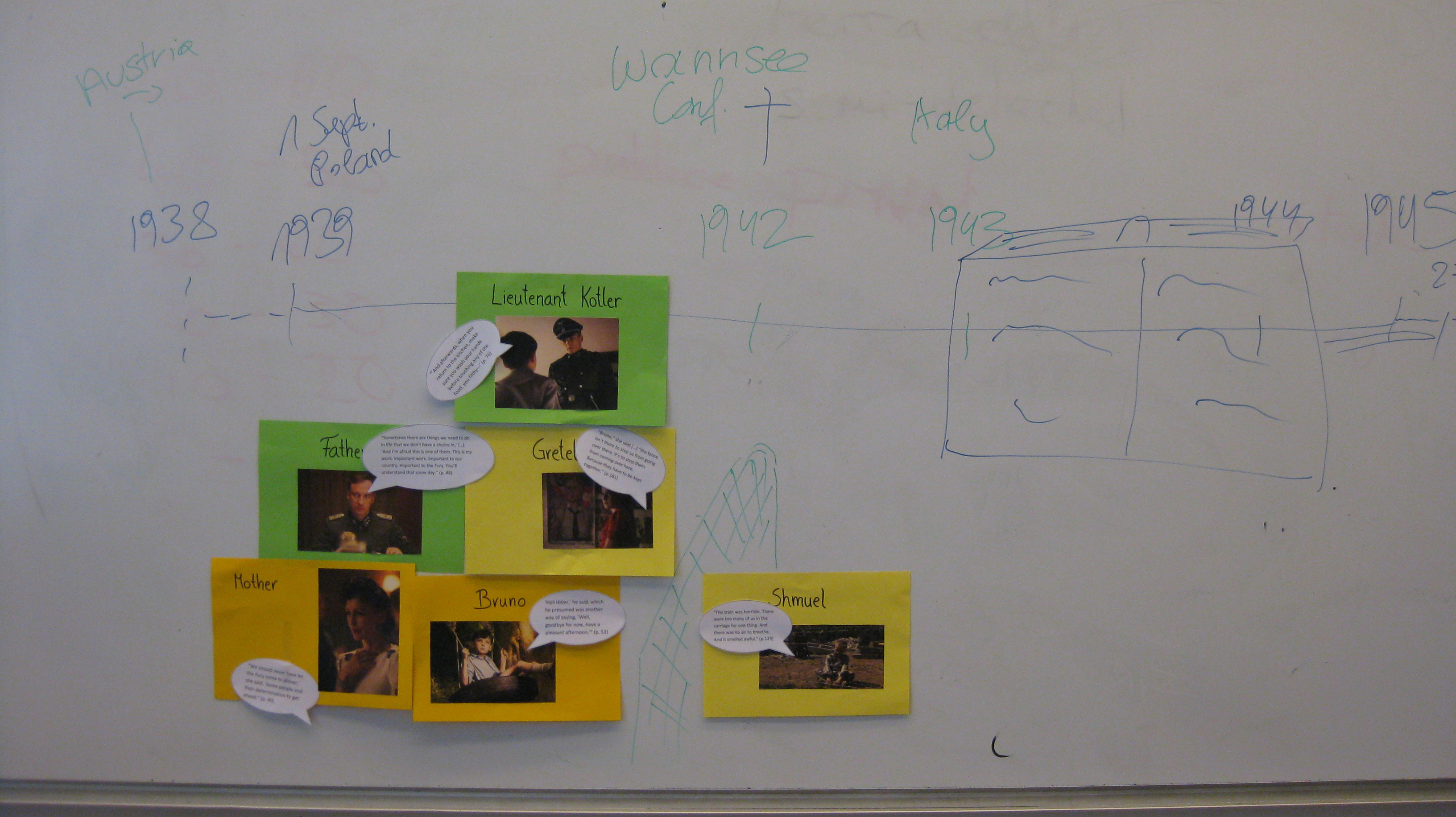Creative Book Presentations
Presentations are the final and culminating point of every book project. Many of the presentation activities described on this page can be used at any level. What they all have in common is “activity”. The main goals of these presentations are
- 😆 to make the other learners interested in reading some of the books as well
- 😆 to practice presentation skills and oral skills and
- 😆 to motivate the learners to dig a bit deeper and understand more than just the plot level of a story.
What we don’t want in these presentations are learners
- 😥 reading long summaries from their sheets
- 😥 confusing the class with all the minor characters
- 😥 boring the audience with unimportant details of the author’s biography
Year 1:
From year 1 on my students present books regularly. The first presentations are no more than 2-3 minutes long and absolutely harmless. I try to avoid any stress and formality in these presentations and encourage the kids to do as many of them as possible. In most lessons I will have one or two kids wanting to present a book at the beginning. The whole idea of these mini-presentations is to show the class that WE ALL READ and that reading books is actually fun and not hard work at all. Moreover these mini-presentations give even young learners a chance to speak in front of the whole class regularly and thus lose their fear of presenting. Of course I “pay” for each of these presentations. Everybody will get a + 😉 After these little presentations the kids pass on the books and thus the whole process of reading starts rolling….
In a typical presentation in year one the learners
- show the book they have read (usually one of the picture books) and they
- say 5 to 7 sentences about the plot and characters in the book. If they have done one of the simple reading diary tasks, they can easily use these sentences again in the presentation. They
- tell us how they liked the book and finally,they
- write one “cool phrase” that they have learned from the book on the board and the class copies the new phrase into their vocab files.
Years 2-8 and beyond
In the course of year 2 or 3, when we do our first real book-projects, the presentations become more varied and creative. The following list of possible activities can be used at any level, up to adult literature. The depth and complexity of the results will of course depend on the age and the level of maturity of the learners.
I have learned many of the activities from these teaching books.
Most of these presentations are done in groups and every student is responsible for a different activity or aspect of the book. Being responsible for it means that the student plans and prepares this part of the presentation. In some cases they will then need other members of the group to do it with them (act out a scene, take turns speaking, bring some of the props….) The presentation should be as colorful and interesting as possible and will often be assessed by the class according to a list of criteria that we have agreed upon before.
Plot
Present an alternative book cover and blurb:
Be sure the illustration relates to an important aspect of the book. Use appropriate colors to evoke the atmosphere created by the book. (Older Ss can also be asked to print out different book covers from the internet. Amazon.com usually has different editions. Ss then present the different cover designs and their own version. The class chooses their favorite one. This is a very good way to discover underlying themes and the tone of a novel.
Plot on the line

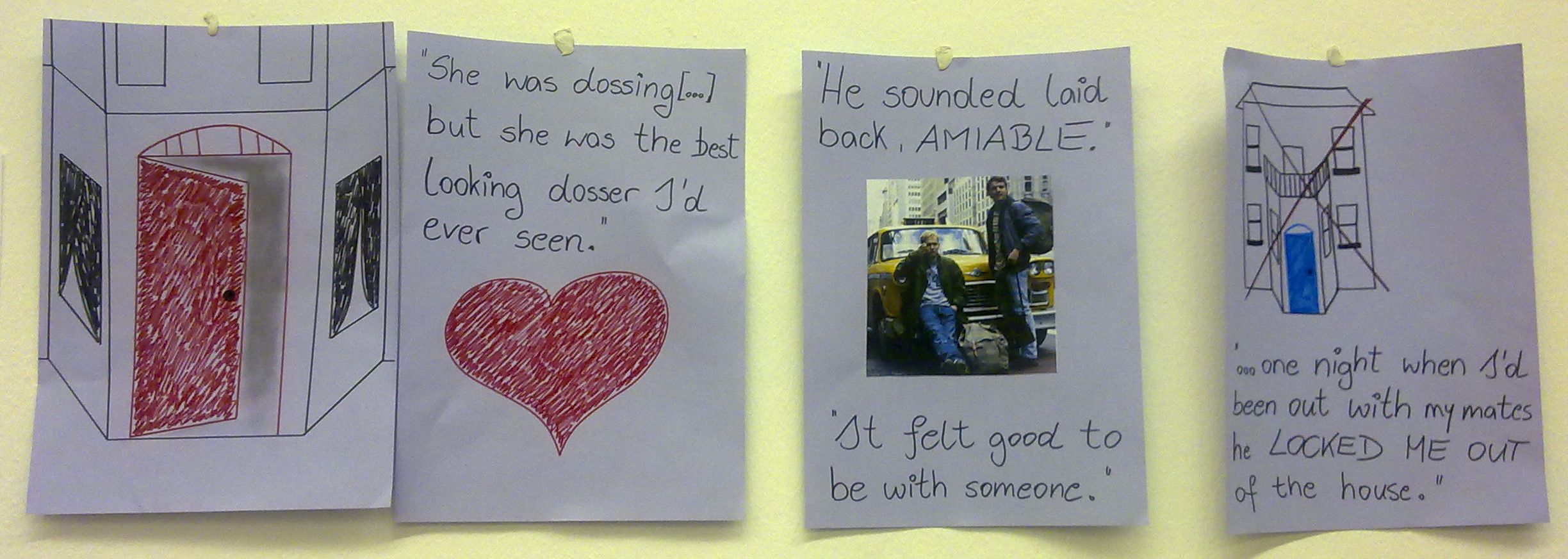
Write seven to ten main events on separate sheets. Add simple drawings and illustrations. In your presentation hang up one picture after the other using clothes-pegs and a string or stick your pictures on the board with magnets or blue-tack. Talk about each picture using your own words. Don’t give away the ending.
Storyboard
Draw 4-10 important scenes from the book and tell your audience what roles they play in the book. In your presentation use your own words to explain each of the events briefly
Plot diagram/Plot mountain
Draw a “fever curve” of the ups and downs in the novel. Peaks of suspense or conflict…., label the curve. In your presentation use your own words to explain each of the events briefly
Click on the image to view it in full size.
Make a plot mini-book
This activity works well for picture books or short stories that the teacher has read to the class. After listening to the story the learners design their own mini-books. They write their own version of the story and add illustrations on each page.
Variation: The learners might also write a follow-up story rather than a summary of the original story.
For details go to the page: Origami books
Act out a scene of your choice

Use simple props and costumes.
This activity works best in combination with the “plot on the line” or the “plot mountain” activities. The learners act out one or two important scenes and explain at what point in the novel these scenes happen.

Setting
Pop-up or Painting
Make a setting pop-up or a painting that shows the most important place(s) in the book.
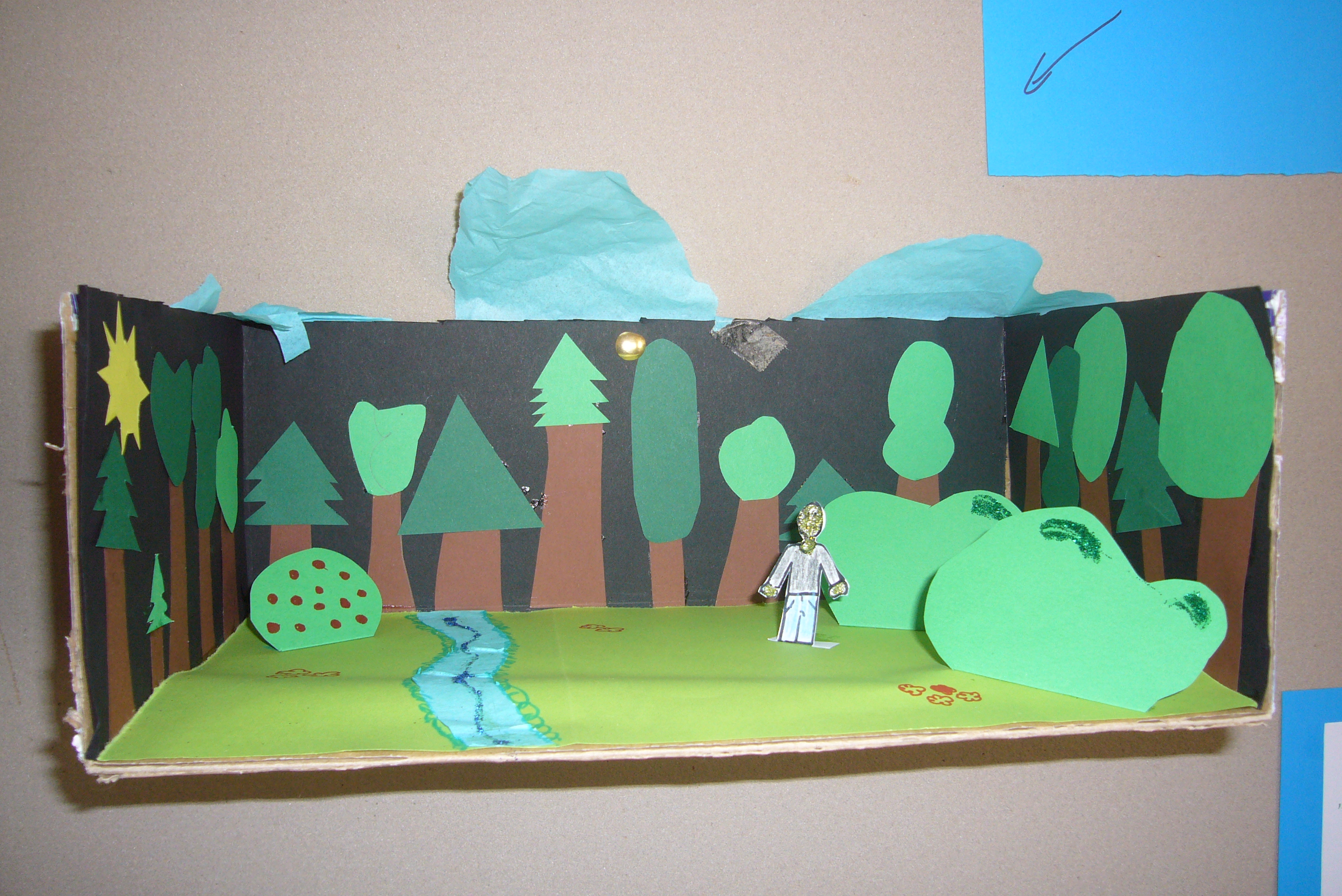
Setting murals or collages
Maps
Draw a simple map of the locations in your novel. Make sure the map is large enough for us to read it clearly. Attach a legend to your map. Write a paragraph that explains the importance of each location indicated on your map.
Characters
Identity bags/ character suitcase:
Bring a bag full of objects that are somehow important to the main character of your book. Show them and explain their relevance.
Character T-shirts
design a T-shirt (picture and slogan) for one of your book’s characters
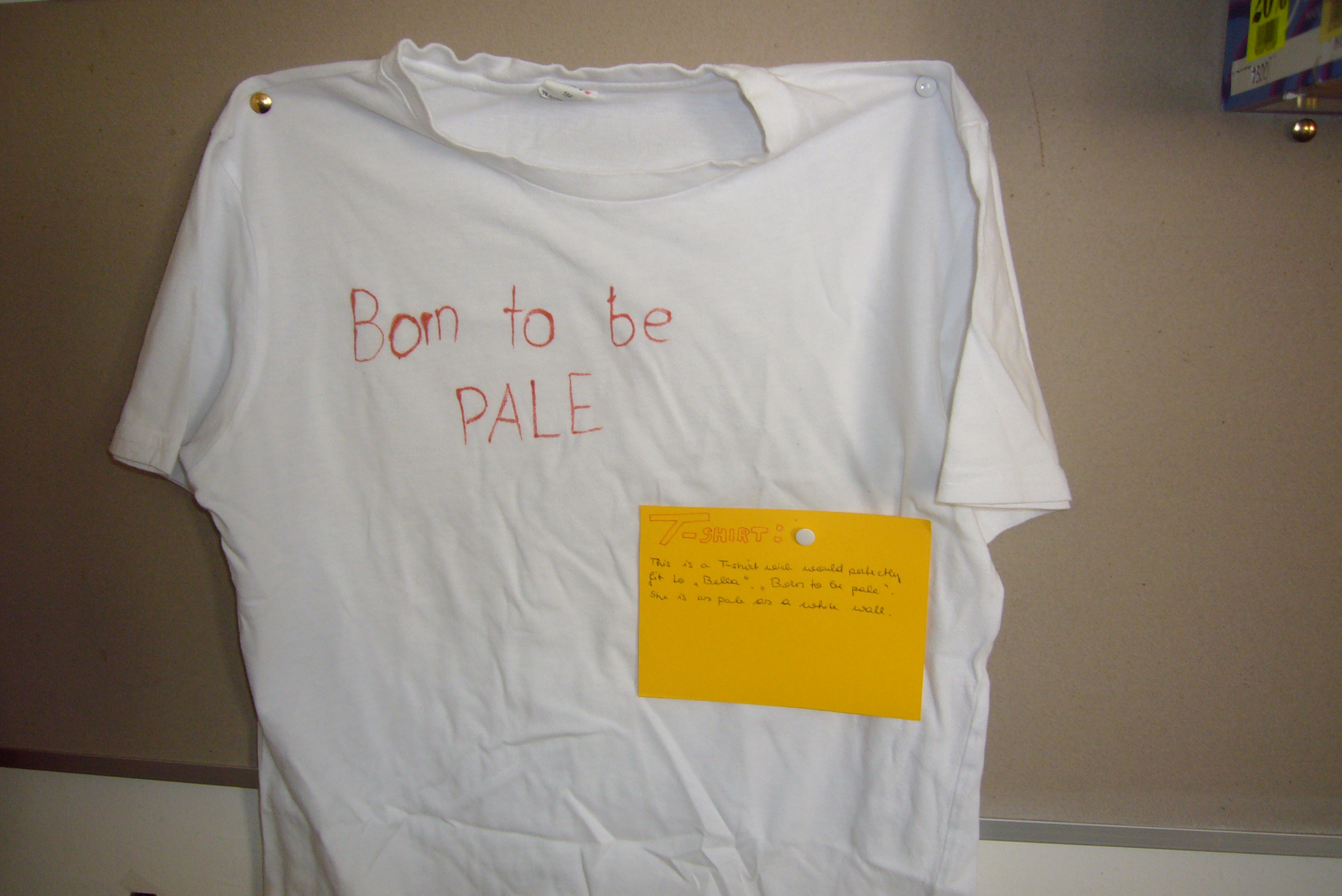
Character portrait or collage
Find fitting pictures and words from magazines and present (one of) the main character(s) in a collage.
Movie Casting
Imagine that your book will be made into a movie. Choose suitable actors and actresses for each of the main characters and present them to the class. Explain why you think these actors/actresses would be ideal for these roles. What characteristics and qualities will they have to show in order to portray the characters well.
Prepare a “bubble sheet”
Prepare a poster where you collect important quotes from your book. In your presentation explain who said these words and why they are important.
Sociogram
Character Buttons

Choose suitable buttons to represent the main characters of the book. Then make a sociogram showing the relations between the characters. Show friendships, rivals and enemies, good and bad characters. Compare your version with other students.
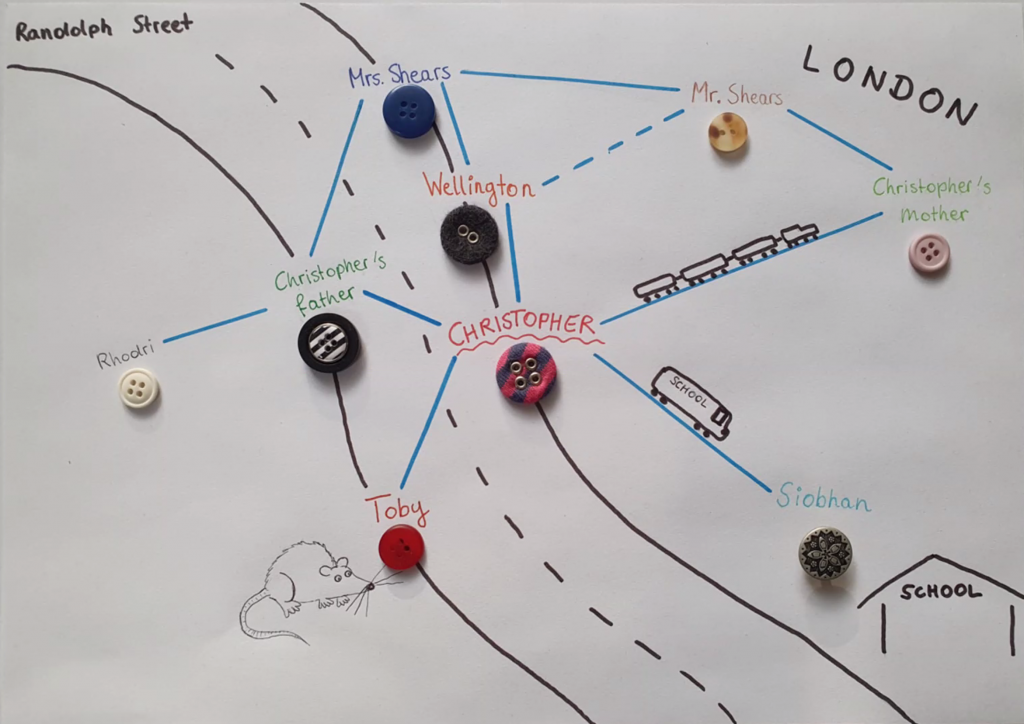
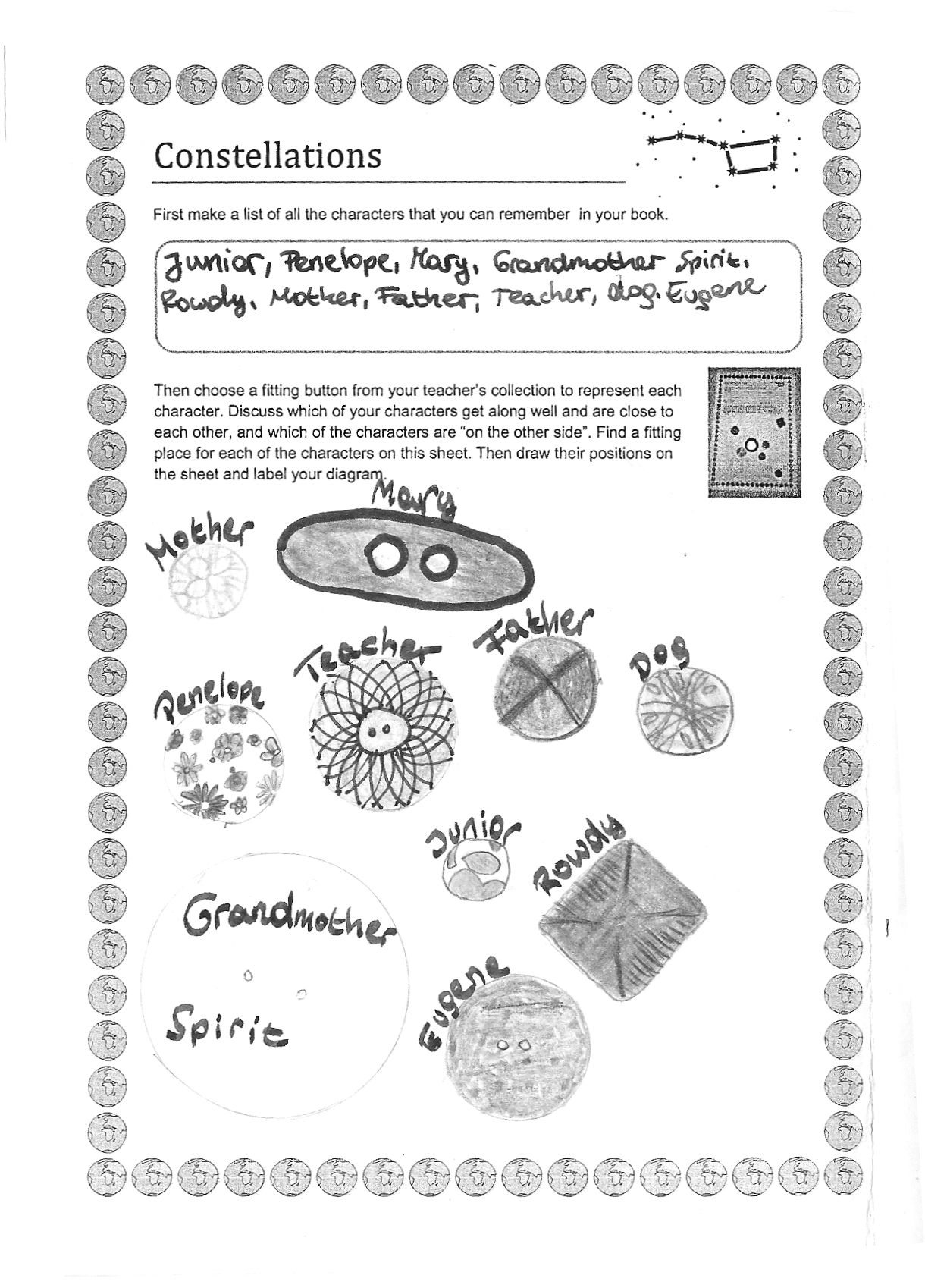
Character profiles:
Look at the different levels of a main character’s personality and complete the profile circles.
Download the detailed instructions sheet here: Character profiles
Other
Poem or Song
Write a poem or song-lyrics that might be used in a film or radio-play of your book.
A Novel Museum
Display 10 to 15 items that play a role in the book. Act like tour-guides and present the artifacts to the class. Explain the significance of each item.
For the Novel Museum imagine that the characters in your book were REAL people. Our town wants to make their stories public and has, therefore, dedicated a whole room in the museum to these people and their stories. There they show real artefacts from your characters’ lives. These objects are presented nicely in showcases and on tables around the room. Each of the objects has a label explaining the importance of the item, where it is from and what role it played.
In your museum display you might show some of the following things:
Maps, short newspaper articles about what happened to your characters, diary pages, letters, objects they used during their adventures, photos, clothes they were wearing, favorite items of your characters….. or any other things that play an important role.
Make a board game
Design a board (use settings, plot line and events… task cards or fields… you might even make Fimo character-counters…
Non-stop talking
The students stand in two concentric circles or parallel rows. The students in the outer circle or row talk non-stop for 1 minute (more advanced learners can do 2-3 minutes) about the novel they have read. Students in the inner circle/row listen. After 1 minute they change roles. Then the students in the outer circle move one person to the left. Do this with 3-4 partners. This activity works well for independent reading where the students talk about different books. If they have all read the same book give out sub-tasks for each round: e.g: favorite character, least favorite character, setting(s), ending, …
Acrostic poem
Write the title of the novel downwards on a page. Then use each letter as an initial for a line about the book.
Alternative idea:
If you have an idea of your own contact your teacher about it.
Older students:
Older students who read modern or contemporary literature in their reading groups might also be asked to present:
Short information about the author:
Main focus should be on typical themes or characteristic topics, style, other books… Biographical information only if relevant (e.g.: personal experiences that are reflected in the books…)
Historical or cultural background of the novel
Bring some paintings, play a piece of music from that period, show pictures or a simple time-line of historical events and personalities…
Making connections to the real world:
Depending on the topics and themes of the book Ss might do tasks such as the following (designed for Brave New World or Animal Farm):
- Present the basic principals of propaganda and advertising (do an internet search)
- Give a propaganda speech about any topic of your choice. Then explain the methods you have used.
- Present the pros and cons of genetic engineering
Encourage students to prepare attractive, attention grabbing visuals for their presentations. Do not allow text on powerpoint slides. Allow only pictures or keywords and make sure the students use their own words rather than reading off prepared texts.
Online Presentations
We do not always have time for a full round of book presentations in class. Moreover, online presentations can be viewed by a wider audience.
I have used two formats and platforms for these presentations.
For younger learners I use flipgrid.
It is safe and the videos can only be viewed by members of the class. If students and parents give me permission, I can share the link to the flipgrid videos with others and/or I can protect it with a password.
Online presentations on readingiscool.xyz
More daring kids can present their books on my public blog readingiscool.xyz
Visit the blog and see which books my students have read and what they have to say about them.


